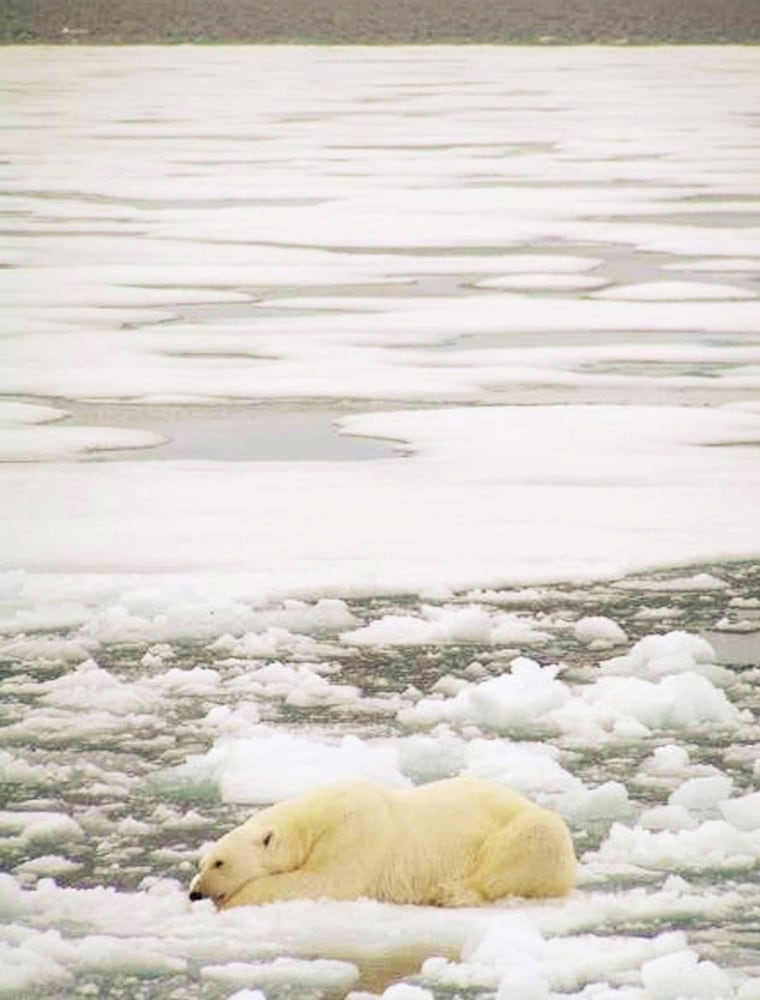Timing its move to the start of the Kyoto climate pact, a conservation group on Wednesday petitioned the Bush administration to list the polar bear as "threatened" under the Endangered Species Act because its main habitat, sea ice, is shrinking as temperatures rise worldwide.
“The United States must quickly reduce its greenhouse gas emissions to a small fraction of current levels or polar bears will become extinct,” Kassie Siegel of the Center for Biological Diversity said in a statement announcing the petition.
The United States is the largest emitter of manmade emissions of carbon dioxide and other gases that many scientists tie to global warming. Nearly a quarter of all CO2 worldwide from burning fossil fuels originates in the United States.
Senator and science
Sen. Joe Lieberman, D-Conn., lent his support, stating that “the potential listing of the polar bear as an endangered species because of the effects of global warming should set off alarm bells around the world.
"Global warming is removing the bears’ habitat and wreaks havoc in the arctic climates where they live and grow," he added. "To spoil the earth for generations to come, and for the creatures that inhabit it, when we knew what we were doing and could have stopped it, would be a moral failing of enormous — and might I add — biblical proportions.”
The Arctic Climate Impact Assessment, a program that includes U.S. participation, projects Arctic winter temperatures could rise by up to 18° Fahrenheit over the next 100 years. Summer sea ice will likely disappear entirely by the end of this century, according to the report released late last year.
The center said an ESA listing would require the U.S. government would have to make sure it does not “jeopardize the continued existence” of polar bears, or adversely modify their critical habitat. By law, the Fish and Wildlife Service must respond to the petition within 90 days.
Hudson Bay cited
The largest of all bear species worldwide, polar bears live only in the Arctic and in areas with sea ice for a large part of the year, the center noted. Twenty populations, or stocks, exist within the jurisdiction of five countries — the United States (Alaska), Canada, Norway, Denmark (Greenland) and Russia — the center said.
The center pointed to Canada's Western Hudson Bay as a warning sign, saying that its sea-ice season is 2 ½ weeks shorter than a few decades ago, giving polar bears less time to hunt seals on the sea ice.
"Once the ice melts in Western Hudson Bay in springtime, polar bears must fast for up to eight months on land until the sea ice returns," the center stated. "Decreases in polar bear body condition and decreases in survival of polar bear cubs from global warming have already been observed and attributed to global warming in Western Hudson Bay."
